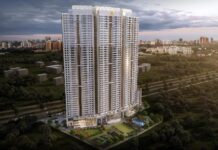New Delhi, April 07, 2017: The Prime Minister Shri Narendra Modi launched the Pradhan Mantri Awaas Yojana-Gramin (PMAY-G) on November 20, 2016. The new Rural Housing programme is designed to meet the needs and aspirations of households. With a higher unit cost, it allows for construction using local materials and local house designs. Homes will have cooking area, toilet, LPG connection, electricity connection and water supply through convergence, and beneficiaries can plan their homes as per their need. Training programme for Rural Masons has been launched to meet a critical skill requirement for quality construction. The selection of beneficiaries has been through a rigorous process using Socio Economic Census (SECC) Data for those who are homeless or in 0, 1, 2 kutcha rooms with kutcha roof. The SECC Data has been validated by Gram Sabha and also subjected to space technology validation to ensure that there is no inclusion of errors. CAG’s Performance Audit Report, 2014 highlighted problem of ineligible beneficiaries covered under Indira Awaas Yojana (IAY). It has been completely taken care of through the 3 filter selection process under PMAY-G. A total of 44 lakh houses were approved for 2016-17 and the Ministry of Rural Development is working hard to complete all of them by December 2017. A completion period of 6 to 12 months is being followed in PMAY-G.
The thrust in 2016-17 was to launch PMAY-G with all the tasks completed regarding selection of beneficiaries, IT/DBT platform, space technology use, training programme for Rural Masons, finalisation of housing design typologies etc. The other major thrust was to complete most of the 36 lakh incomplete Indira Awaas Yojana houses which had been pending from anywhere between 1 to 4 years. As per the reports received from the States, a total of 32.14 lakh houses have been completed in 2016-17 . On account of network and IT related issues on the AwaasSoft MIS, only 24.81 lakh completed houses have been uploaded on the AwaasSoft so far. The rest are in the process of being uploaded. The completion in 2016-17 is almost 2 to 3 times higher than those were getting completed in earlier years. 100% use of AwaasSoft MIS and IT/DBT system is being ensured.
As part of the Governance Reform, from anywhere between 2 to 20 Bank accounts in every District for the Rural Housing programme earlier, there is now a Single Nodal Account at the State level from where funds are directly transferred electronically on the AwaasSoft-PFMS platform to the beneficiary’s account.
The beneficiaries under PMAY Gramin have been selected up to 2022 based on the prioritisation and in a transparent manner. The three filters have ensured that the genuinely poor homeless and those living in dilapidated houses, have been selected. Large number of households from vulnerable groups and large number of women have been selected as beneficiaries. House design typologies incorporating disaster resilient features have been finalised and are being used by the State Governments under the programme. The workmanship and employability of trained Rural Masons is being improved by ensuring their assessment and certification as per the Qualification Pack endorsed by the National Skill Development Corporation (NSDC).
States like Madhya Pradesh, Rajasthan, Maharashtra, Chhattisgarh, Karnataka, Assam have taken the lead in the implementation of the PMAY-G. States like Bihar, West Bengal, Uttar Pradesh, Madhya Pradesh, Assam, Jharkhand, Rajasthan and Maharashtra have done well in completing a very large number of incomplete Indira Awaas Yojana houses.
The Department of Rural Development plans to complete 51 lakh houses in 2017-18. An additional 33 lakh houses will be sanctioned for 2017-18 shortly. A similar number is proposed to be completed in 2018-19 making the completion during 2016-19 period of 1.35 crore houses. This will pave the way for Housing for All by
Corporate Comm India(CCI Newswire)




















